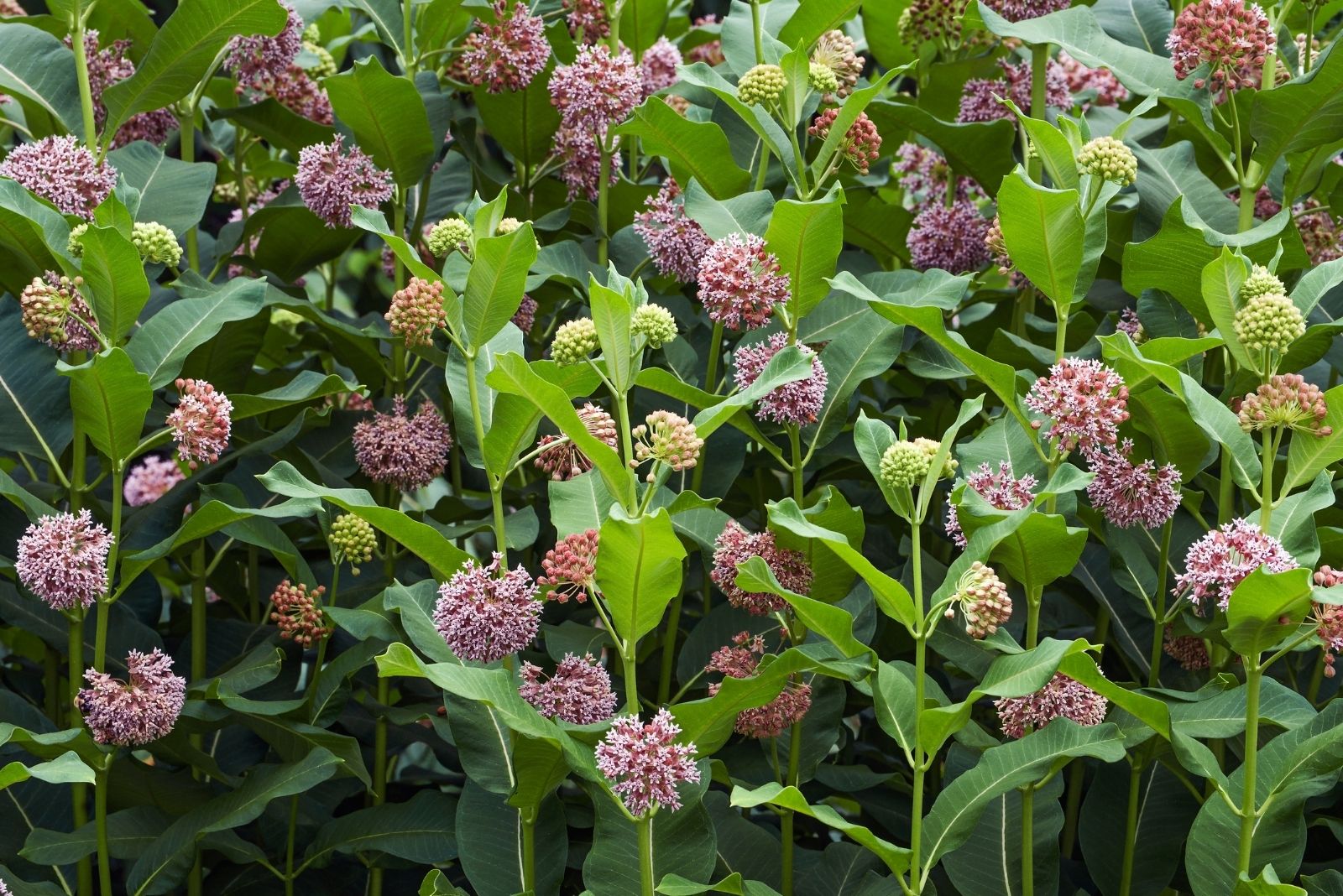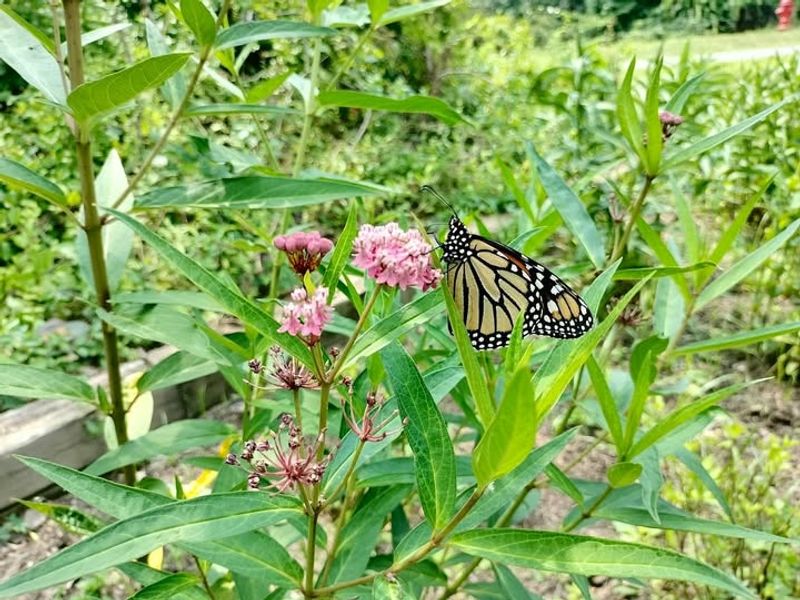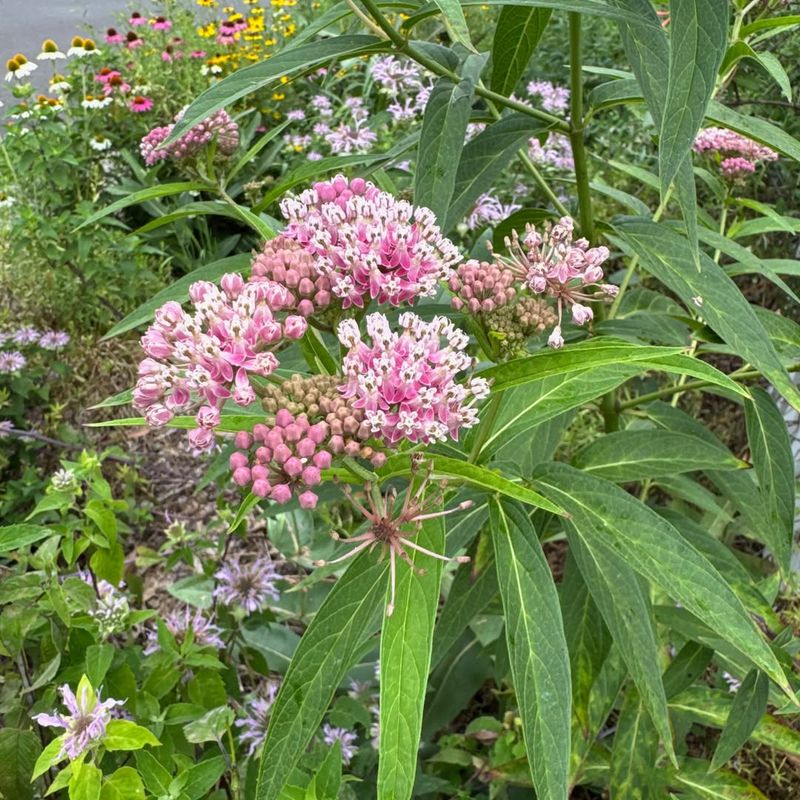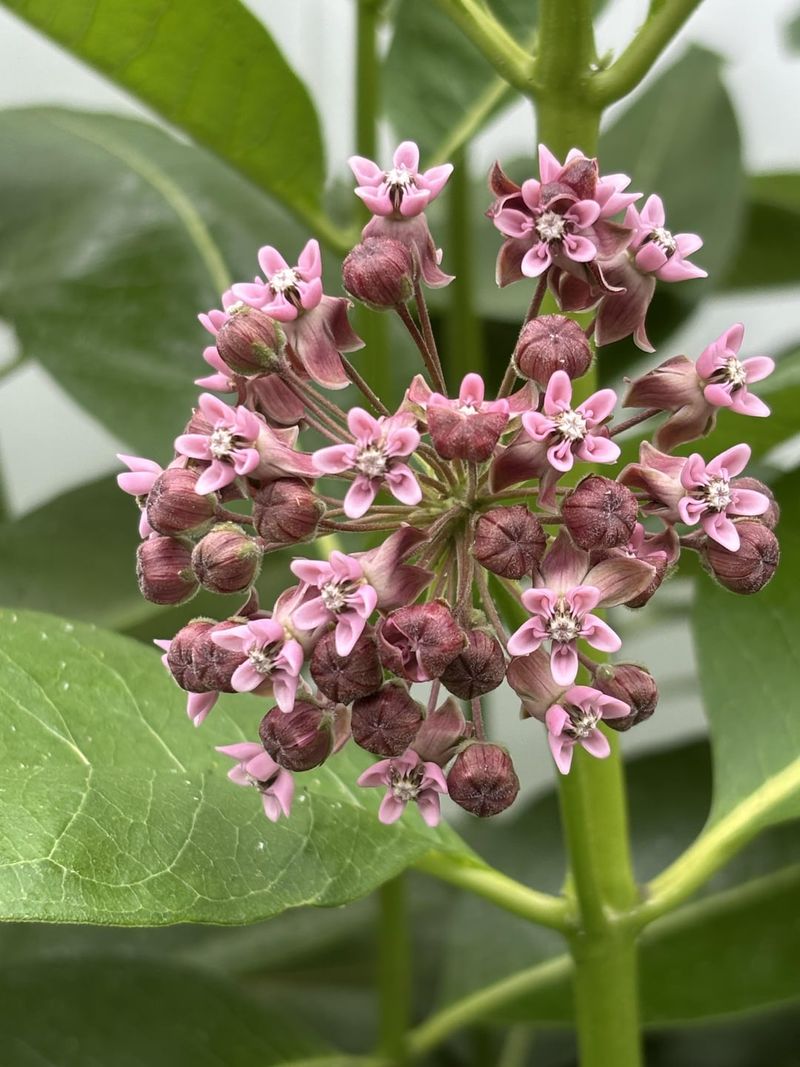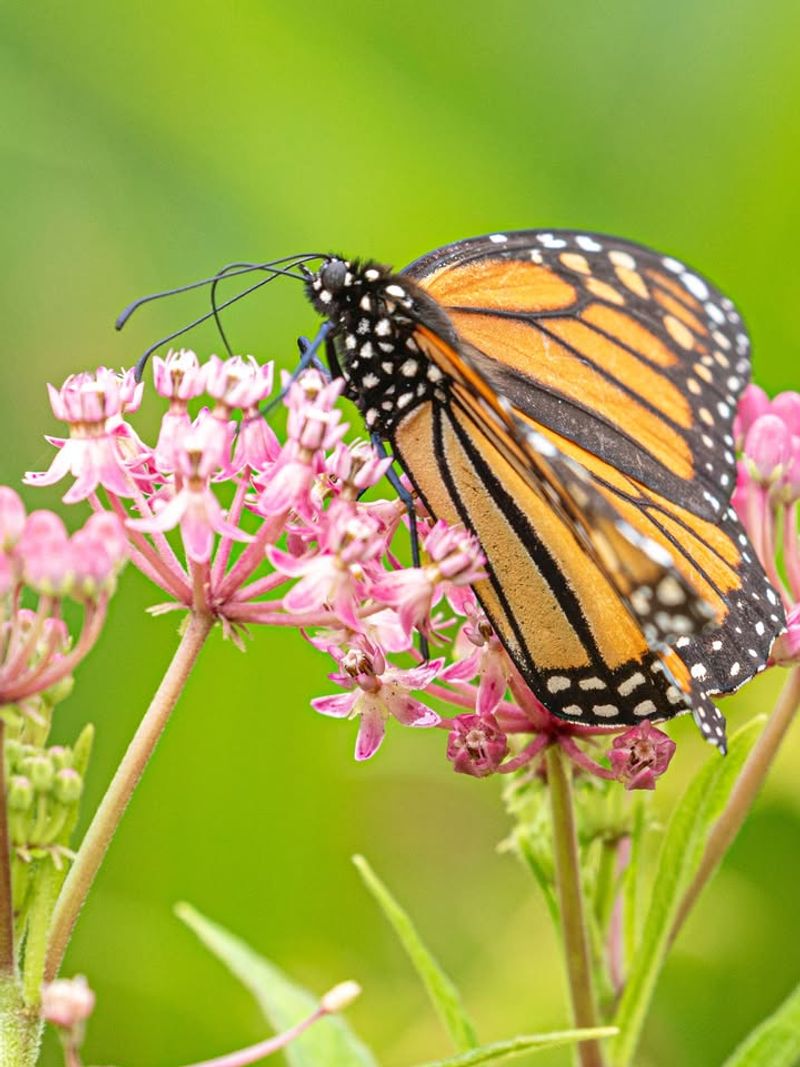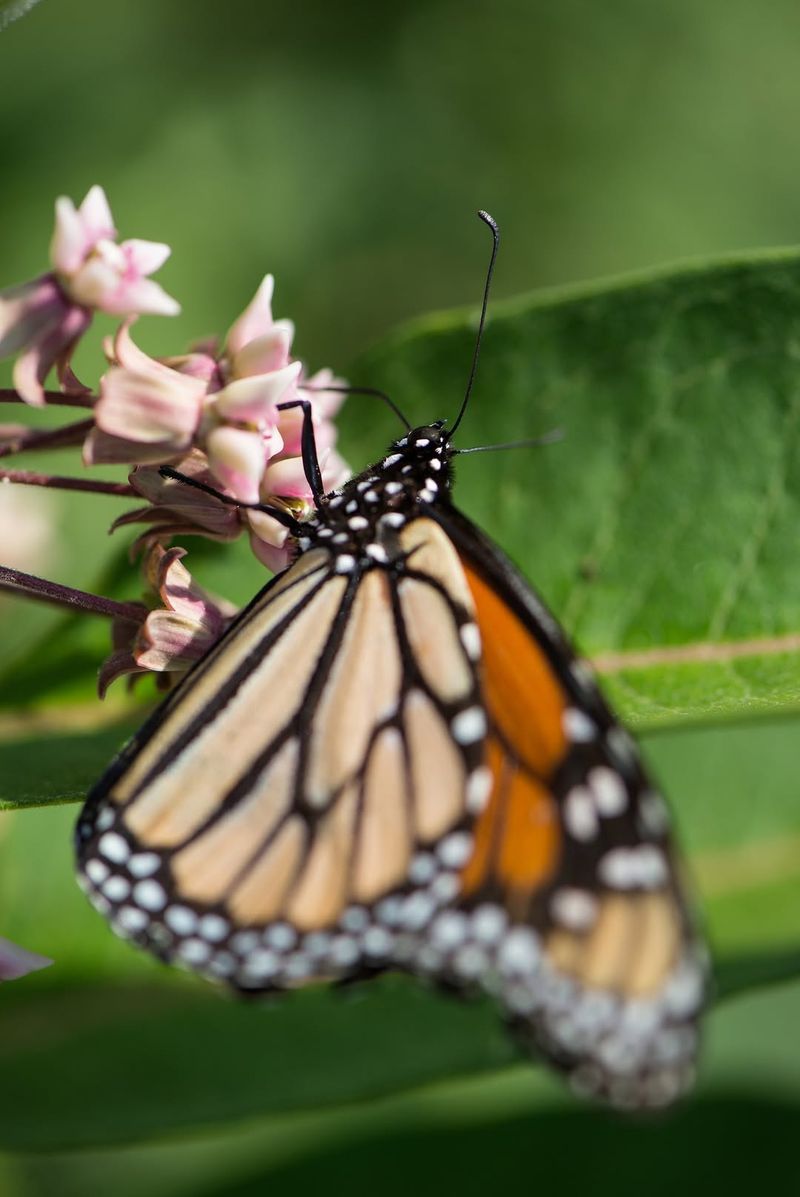Common milkweed is like a magnet for butterflies across Pennsylvania, and there’s a good reason for that. This native plant offers everything winged visitors need to survive and thrive.
Whether you’re hoping to spot more monarchs in your yard or just curious about what makes milkweed so special, understanding its appeal can transform your garden into a butterfly haven.
1. Monarch Butterflies Depend On It For Survival
Monarch caterpillars can only eat milkweed leaves, making this plant absolutely essential for their lifecycle. Without it, monarchs simply cannot reproduce or continue their incredible migration journey.
Pennsylvania sits right in the monarch migration path, so planting milkweed in your yard directly supports these iconic orange and black beauties.
Female monarchs actively search for milkweed to lay their eggs, and once hatched, the caterpillars feast on the leaves for about two weeks before forming their chrysalis.
2. Nectar-Rich Flowers Fuel Butterfly Energy
Those pink and purple flower clusters aren’t just pretty to look at—they’re packed with sweet nectar that butterflies absolutely love. Adult butterflies need this sugary fuel to power their flight and daily activities.
Common milkweed blooms from June through August across Pennsylvania, offering a reliable food source during peak butterfly season.
Swallowtails, fritillaries, and skippers frequently visit these blossoms alongside monarchs. The clustered flower arrangement makes it easy for butterflies to move from bloom to bloom efficiently.
3. Natural Chemical Defense Protects Caterpillars
Milkweed contains toxic compounds called cardenolides that make monarch caterpillars poisonous to predators. Birds and other animals quickly learn to avoid the brightly striped caterpillars after one bad experience.
This chemical shield continues protecting monarchs even after they transform into butterflies. Pennsylvania gardeners who plant milkweed help create safe nurseries where young monarchs can grow without constant threat.
The toxins don’t harm the caterpillars themselves—they’ve evolved to tolerate and store these chemicals for their own protection.
4. Easy To Spot From Far Away
Butterflies have excellent color vision and can spot milkweed’s distinctive pink flower clusters from considerable distances. This visual beacon helps them locate suitable habitat quickly as they travel.
The tall stalks, which can reach four feet high in Pennsylvania gardens, make milkweed stand out in the landscape. Once butterflies find one milkweed patch, they often return repeatedly throughout the season.
Planting several clumps together creates an even more noticeable signal that draws butterflies from across your neighborhood and beyond.
5. Blooms During Peak Migration Season
Timing is everything in nature, and milkweed’s summer flowering perfectly coincides with monarch breeding season in Pennsylvania. This synchronization ensures butterflies find food exactly when they need it most.
From late spring through late summer, multiple generations of monarchs pass through Pennsylvania, and milkweed supports them all.
The long blooming period means there’s always fresh nectar available for adults and tender leaves for caterpillars. Fall migrants also benefit, loading up on nectar before their long journey south to Mexico.
6. Provides Shelter And Resting Spots
Beyond food, milkweed’s broad leaves and sturdy stems offer butterflies safe places to rest between flights. On cool mornings, you might spot butterflies warming their wings on sun-facing leaves.
Pennsylvania’s unpredictable weather makes these shelter spots especially valuable during sudden rain showers or windy days.
The plant’s height and density create protected microhabitats where butterflies can hide from predators. At night, many species roost on milkweed stems, tucked safely among the foliage until sunrise brings warmth and renewed activity.
7. Native Plant Adapted To Local Conditions
Common milkweed evolved alongside Pennsylvania butterflies over thousands of years, creating a perfectly matched relationship. This native plant thrives in local soil and weather without requiring special care or excessive watering.
Unlike exotic ornamentals, milkweed naturally fits into Pennsylvania’s ecosystem and supports dozens of other beneficial insects beyond butterflies.
It tolerates clay soil, handles summer heat, and survives cold winters without protection. Once established, milkweed returns year after year, spreading gradually to create larger butterfly-friendly zones in your landscape.

